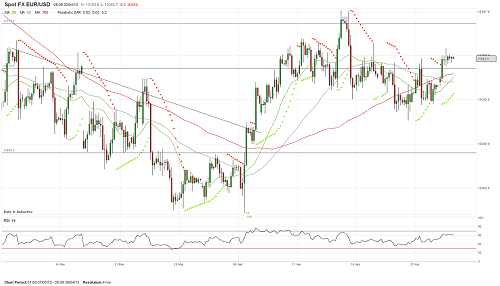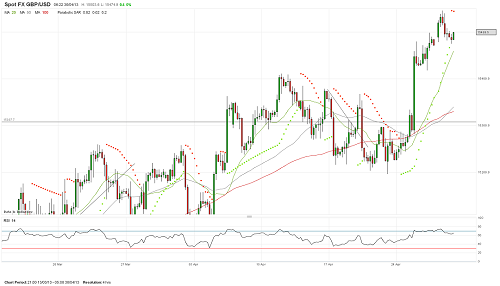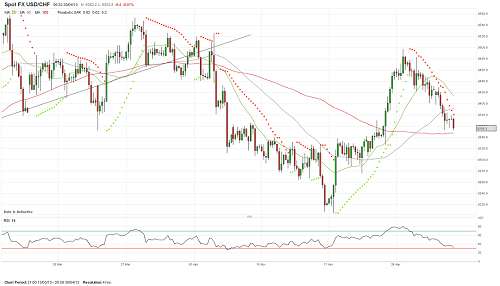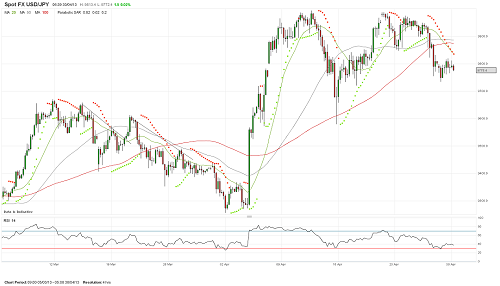What if I told you that mining boom hadn’t even got started yet?
…Or that commodity prices have another fifteen years to keep rallying?
It’d be music to the ears of resource investors who have had a tough few years.
It’s tough to imagine in this bearish environment, but this is exactly what we heard from an expert in an exciting new presentation with our buddy Dan Denning recently…
Phillip J Anderson, of businesscycles.biz, sat down in front of the cameras with Dan a couple of weeks ago. Most of the talk revolved around Phil’s theory on property cycles.
It’s a cracking interview. We haven’t been exactly bullish on Australian property here at Money Morning. But Phillip made an interesting bullish argument based on a predictable 18-year cycle.
He sees the US property market leading the Australian market by about a year and a half, and as US prices are starting to pick up slightly, he’s very bullish on Australian property.
In a way he’s more of technical trader of the property market — less focused on the fundamentals, and more on the technical aspects of property. I don’t want to steal his thunder. Watch the video if you get a chance (it’s available as a Strategy Session for all subscribers of any of Port Phillip Publishing’s paid services).
But I’ve got to admit, that it wasn’t his view on property that interested me.
He has an interesting take on the commodity price cycle too.
The Bull Market is Not Over
According to Phil we’re only 15 years into a 30-year upswing in commodity prices. That would mean that having started around the year 2000, commodity prices won’t peak until 2030.
Commodities to Rise?
The theory behind his thinking is that of ‘Kondratiev waves’.
This is the idea that 60-year cycles are common in a capitalist society. So in the case of commodities, that would be thirty years up — which we are halfway through — and then thirty years down.
Although I should note that mainstream economists don’t accept Andre Kondratiev’s theory…which probably means it’s a good one.
We doubt he worried much about acceptance. What probably upset Kondratiev more was being executed by the Soviets in a concentration camp in 1938, because they didn’t like his theory. That might have stung a bit more.
I like the sound of Phil’s view on commodities, though I have a different reason for thinking the same thing.
My reasoning is that there are a lot of populous countries that are getting much wealthier, and very rapidly too. As they do so, they increase the demand for raw commodities — the building blocks of a new society.
China is obviously the biggest player in this story. In the last twenty years, 400 million people, out of the 1,400 million population, have moved into cities. This has added to the 300 million already in cities. That means about 50% of China is now ‘urbanised’.
The Growth Story in Asia Continues
This migration of people from subsistence existence to city life has been the heart of the China story. It has driven an unprecedented construction boom, and demand for iron ore, coal, copper and basically all key materials.
And the thing is that this process is only halfway through.
China plans to reach 70% urbanisation by around 2030. And in fact get to 80% by 2050, which would be comparable to the US.
It’s not just China. India is on the same path too. Urbanisation is still just at 30%, but is heading for 50% in 2030. That means building cities for another 280 million people.
Let’s look at China and India another way. This chart form ETFS shows where they are in the journey. It tracks time in years along the bottom, and wealth in national income per person on the y axis. Using post-war Japan as a template, you can see that China isn’t just following the same path, but is very early on in the story — as is India.
If the Chinese economy continues developing at its current pace, and its citizens keep urbanising, then its commodity demands have only just begun.
And as you’d expect, it’s in the early stages of urbanisation that demand is the most intense. Once everything is built, and the country enjoys the fruits of its hard work, the demand begins to slow.
India never gets much airplay in the commodity discussion, but is already creating strong demand for key commodities. Its gold demand has long been a feature of the gold market, and as incomes rise, its gold imports rise with it. We’re going to see the same thing for copper, and components of steel.
Another country that will increase commodity demand is Indonesia.
This 846 billion dollar economy is growing at 6–7%, and has been for most of the decade. At current rates, it will be bigger than Australia in fifteen years. The country is becoming rapidly more prosperous. In the last year, luxury property in Jakarta gained 38% in value!
With a population of a quarter of a billion people, it’s double Japan’s population of 127 million. As it develops, it will make an impact on the commodity markets. It already makes up 3% of Australia’s bilateral trade. I don’t want to simply say ‘China ten years ago’ but, well, it’s like China ten years ago!
You could say something similar about the rest of the ASEAN (Association of South East Asian Nations) members on our doorstep. The Philippines is another one to watch. There are 100 million people there enjoying growth of 7%.
My point is that there are almost four billion people across China, India, Indonesia and other ASEAN members that are all enjoying economic growth. And they’re all in the very early stages of raising their living standards to modern levels.
Meanwhile the mining sector, provider of the raw commodities to fuel this ambition, isn’t keeping pace. In fact, the supply of many commodities has flat-lined.
In the long term, this is a very bullish scenario for commodities. With the mining sector limiting investment, it’s not hard to see commodity prices soar much further in the coming decade, which also neatly fits in with Phil Anderson’s Kondratiev Cycle theory.
Dr Alex Cowie
Editor, Diggers & Drillers
Join me on Google+
Ed Note: Phil Anderson says the Aussie property market is set to begin a multi-year bull market. He claims that the Aussie market historically follows the US, which has already begun to rebound. In today’s Money Morning Premium, Kris disputes that a growth spurt is on the cards, but he does reveal the one condition that makes some Aussie property worth buying today. Click here to upgrade now.
From the Port Phillip Publishing Library
Special Report: TORRENT SIGNAL 3
Daily Reckoning: The Kamikaze Rally That Could Drive Stocks Higher
Money Morning: Here’s the Real Reason Why Stock Market Prices Go Up
Pursuit of Happiness: Is There More to Life Than Money and Investing?
Diggers and Drillers:
Why You Should Invest in Junior Mining Stocks





